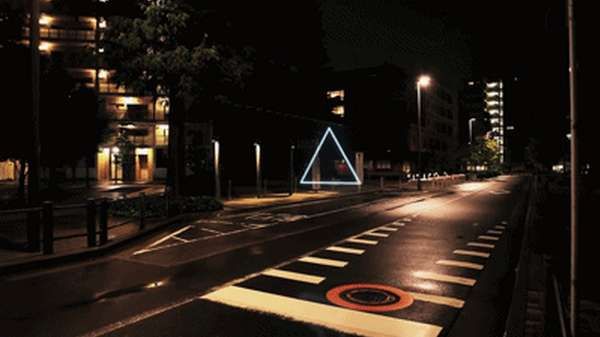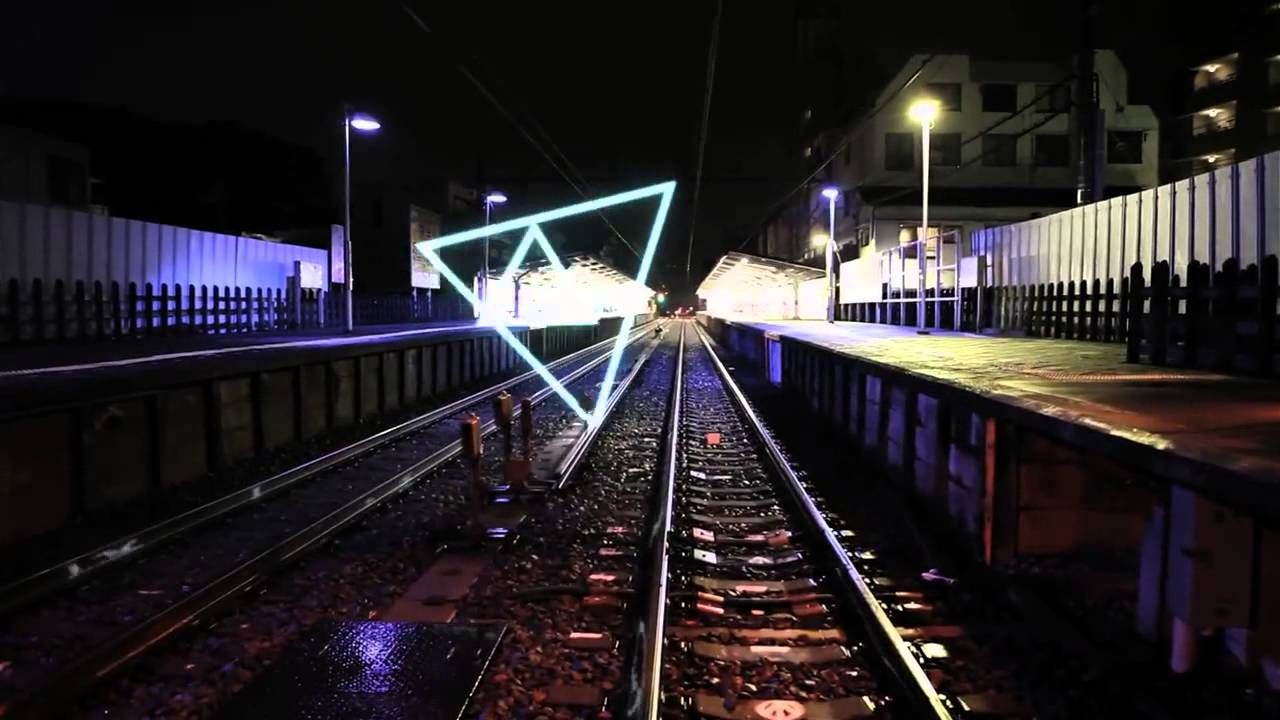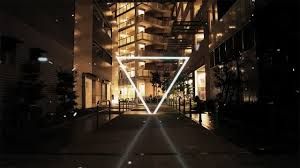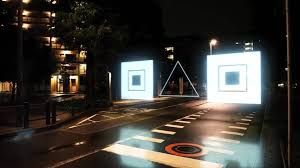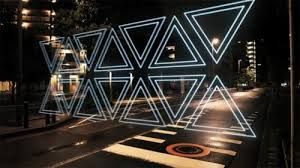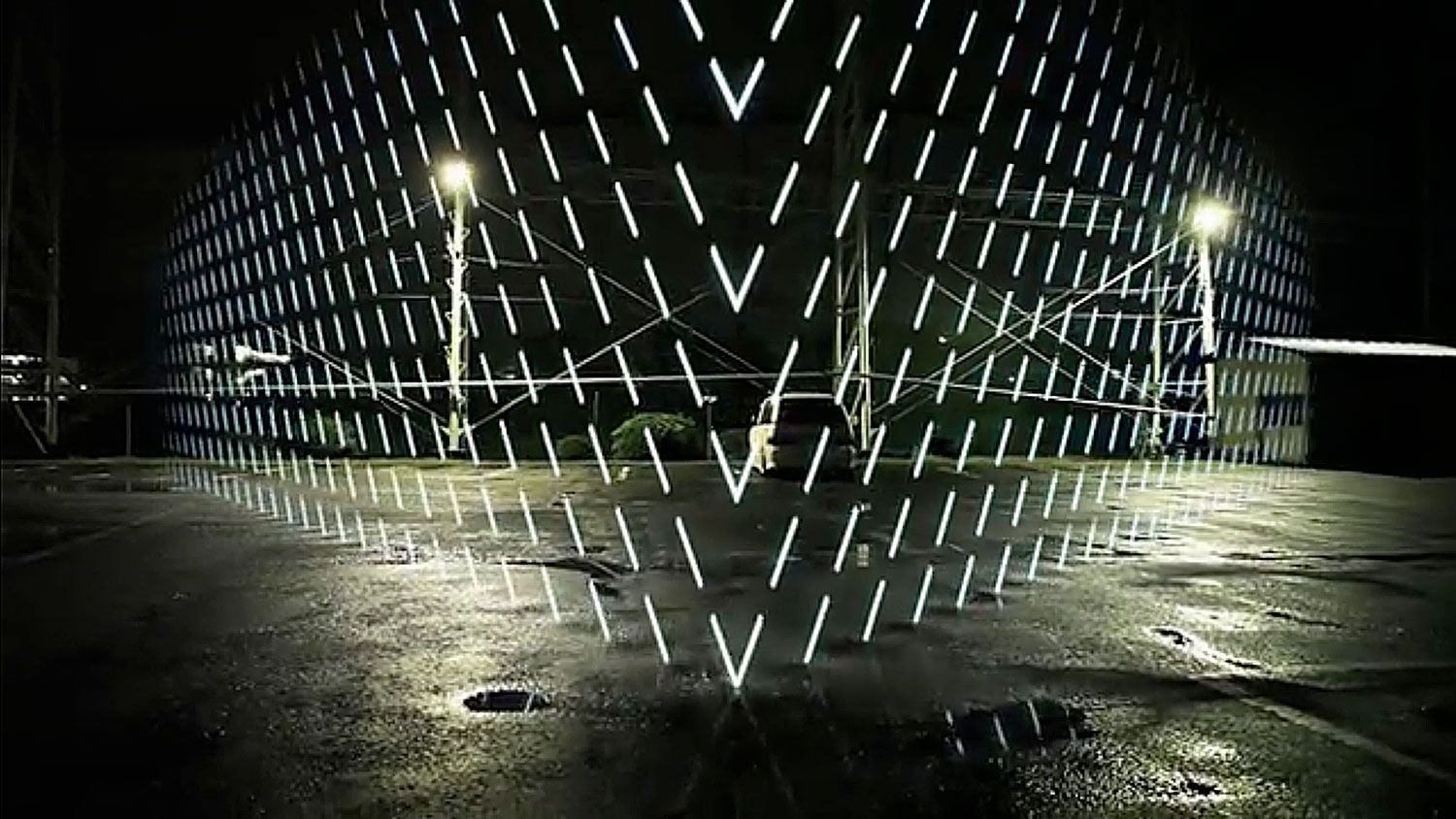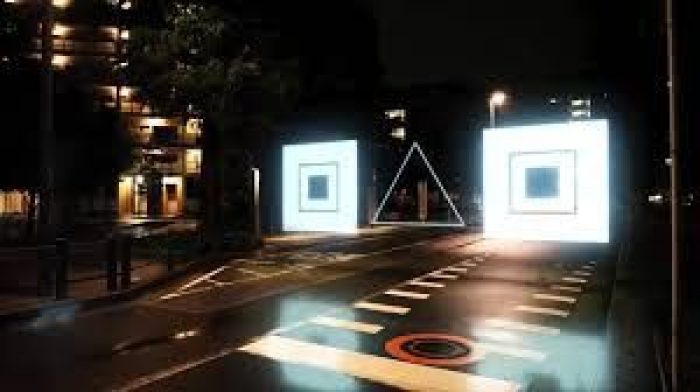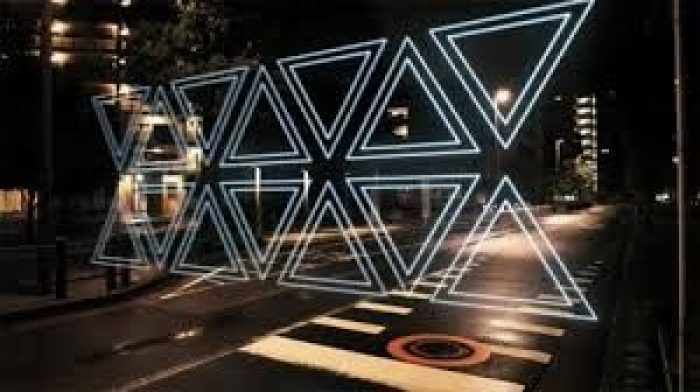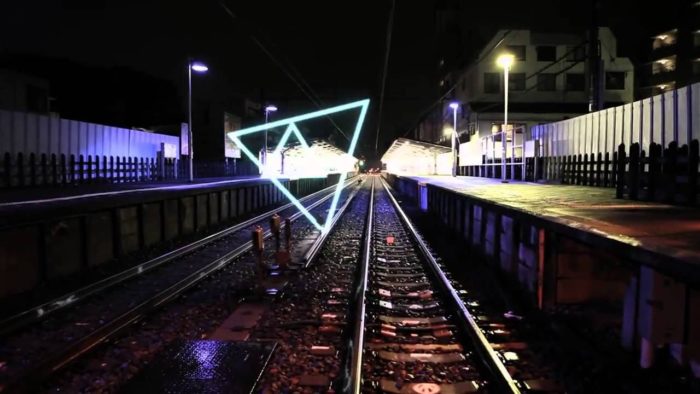Delightful is an apt word to start with when describing the short film, Night Stroll by Tao Tajima. A series of scenes filmed around the streets and parks of night time Tokyo, it is the lights- geometric and three dimensional- that makes the two minute film magical.
I have been, and always will be, a Trekkie. I don’t get dressed up or go to conventions, but I do watch the shows quite regularly and one of the great things about the shows from the Next Generation on, is the holodeck. Now bear with me. There is, somewhere in the world, a software that is essentially a big digital room. It’s a digital holodeck, so to speak. Or it’s a digital racquetball court. The analogy is roughly the same. Just a room, which can be made the size of any particular scene one wants, that has a digital floor which can be made reflective and it’s a software that does quite a good job of representing the reality of a big, transparent room.
There are two realities present in Night Stroll. The film is composed of a series of shot scenes around Tokyo- and a series of digital rooms of roughly the same ‘size’- the two being twinned in each scene. Within the digital room lights are able to float and geometize and change and explode and bounce or reflect any way they see fit, the two realities are intermeshed to form the film; the rooms’ walls seemingly transparent or understood as a holodeck: as a sort of ghost room with three dimensional scenes of Tokyo projected holographically within .
Perhaps the whole Star Trek thing isn’t so important to anyone but me-it is the reference frame through which I was able to understand the film- but what is important, is the reaction of humoured joy and utter fascination I experienced the first time I watched the film. I slowly realized how it was created and thought ‘how great and powerful is this software!’ And I felt more than a little proud of humanity and what we’ve attained. Perhaps the Star Trek thing is important after all.
The tear in the looking glass is a scene between 1:1- and 1:-3 where it is possible to separate the two by watching the relationship between the lights and their reflections.
